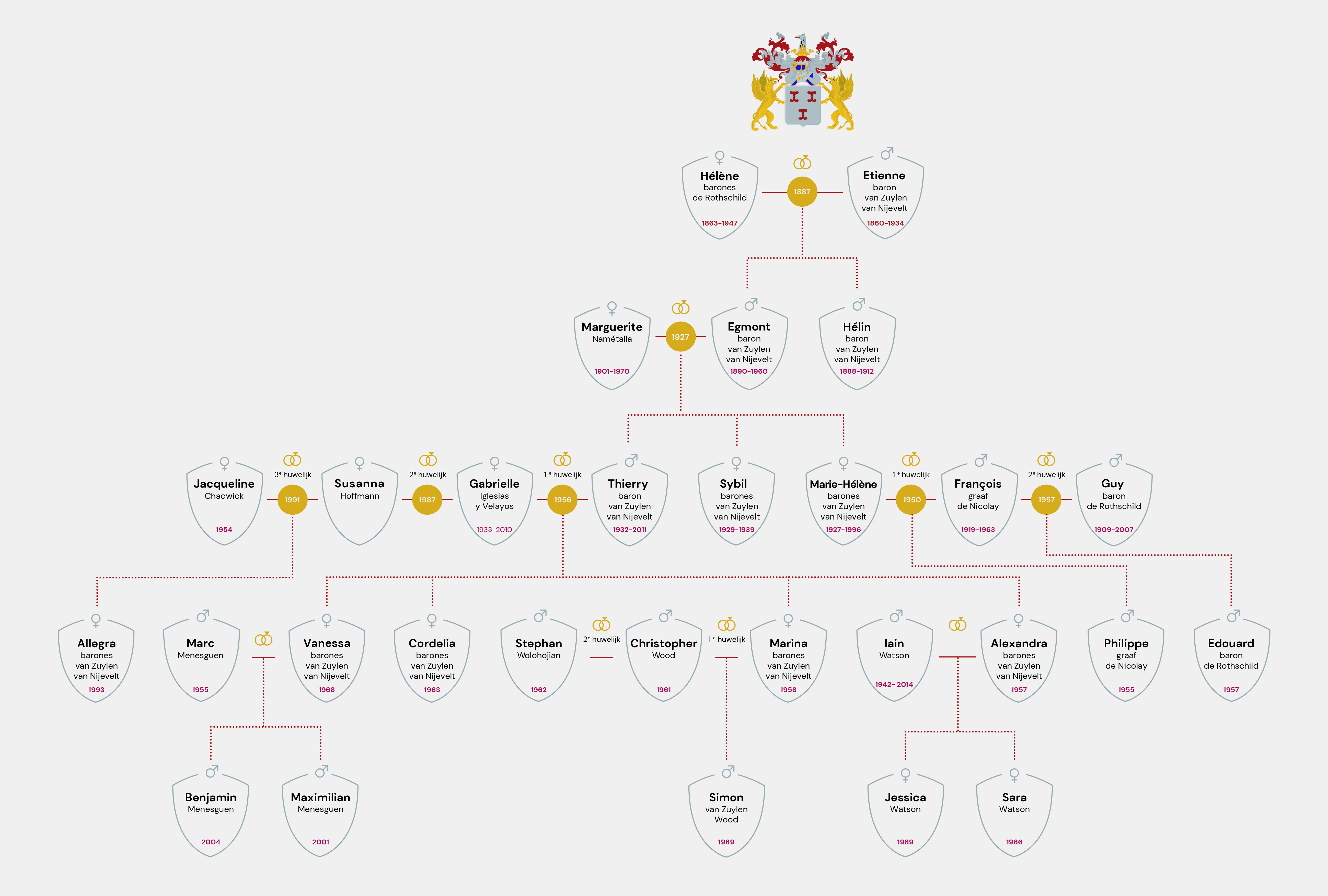Family (history)
From 1250 the name Van Zuylen appears in relation to castles built at that time. They all bear the coat of arms of the Van Zuylens, originally the three 'pillars' of throat (red) on a field of silver (white). The heraldic 'columns' can also be found in Castle de Haar, often in combination with the 'diamonds' of the Van de Haar family.
Within a few generations, there were fifteen branches of Van Zuylen, scattered throughout the province. In the course of the fifteenth century, the numerous members of the family occupied all sorts of key official and military positions in the Sticht of Utrecht. Most of the fifteen branches die out, except for the Van Zuylens branch, which owns the small Nijevelt Castle in Vleuten. The Catholic branch moves to the Southern Netherlands. From this line (line) of the family descends Baron Etienne, who would have the castle rebuilt centuries later.
The descendants of Josina van de Haar and Dirk van Zuylen died out in the 17th century, leaving the castle to inherit to the southern Dutch Van Stembor family. However, a daughter Antonia van Stembor marries Rudolf van Zuylen van Nijevelt. When their son Anthony dies childless in 1801, De Haar is bequeathed to a distant cousin whose grandson would become Baron Etienne: the castle's re-builder. During this time, the castle is not inhabited and deteriorates into a ruin.

In 1887, Baron Etienne marries the wealthy French Baroness Hélène de Rothschild. He meets his future wife at a "ball-masque" in Paris, where he makes an unforgettable impression on her dressed as Hercules. Despite the fact that both families are opposed to marriage, this meeting seals De Haar's fate. The baron's dream can be realized: having the family castle rebuilt as a tribute to his glorious ancestors.
The baron and baroness are concerned not only with the architecture, but also with the interior design of the castle. Together with his wife, the baron makes great trips. One of these takes them to the Middle and Far East at the beginning of the last century. From this trip they bring back all kinds of valuables, including many antique Chinese and Japanese ceramics. Objects of art are also purchased from internationally renowned antique dealers.
Baroness Hélène de Rothschild is no stranger to this collector's mania. She comes from an important family of international financiers - already in the time of Napoleon. In the 19th century, the Rothschilds built large castles and country houses throughout Europe, which they filled with magnificent collections of porcelain, silver, paintings, tapestries and furniture.
Baron Etienne and Baroness Hélène have two sons, Hélin and Egmont. The eldest son Hélin dies in a tragic car accident at the age of 24, after which Egmont inherits the castle. As diplomat and embassy secretary, he continues the family traditions in a rather austere manner. The September residence gets a real revival when his son Thierry inherits the castle. Under Thierry's leadership, the castle becomes a sought-after hotspot for the international jet set with guests such as Coco Chanel, Brigitte Bardot and Maria Callas. Baron Thierry passes away in early 2011. It is now up to his five daughters to keep the glorious family history alive.
